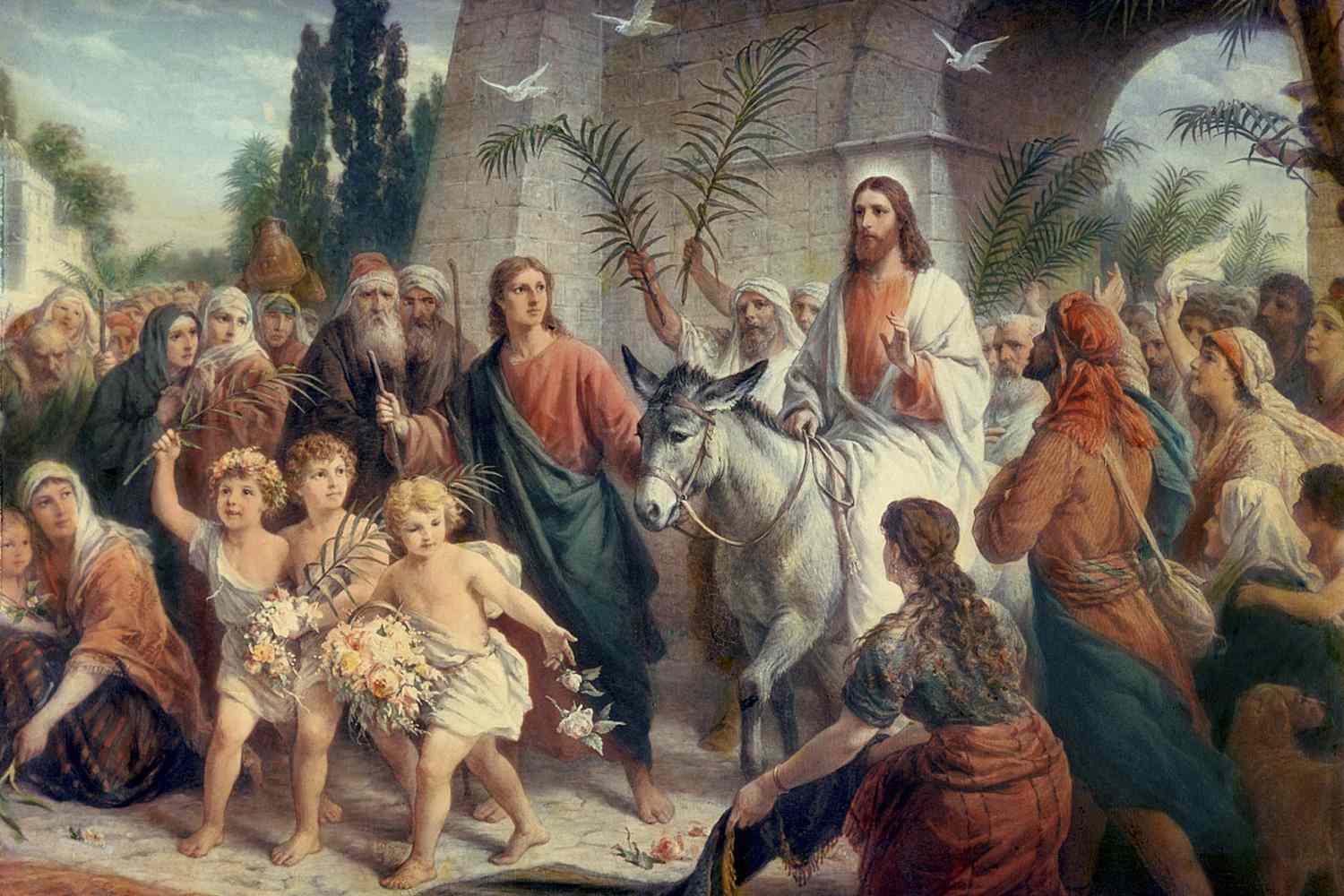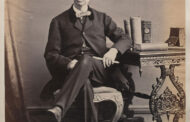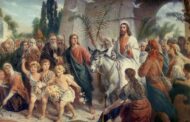Palm Sunday is the Christian moveable feast that falls on the Sunday before Easter. The feast commemorates Christ’s triumphal entry into Jerusalem, an event mentioned in each of the four canonical Gospels. Its name originates from the palm branches waved by the crowd to greet and honor Jesus Christ as he entered the city. Palm Sunday marks the first day of Holy Week; in Western Christianity, this is the beginning of the last week of the solemn season of Lent, preceding Eastertide, while in Eastern Christianity, Holy Week commences after the conclusion of Great Lent.
In most Christian rites, Palm Sunday is celebrated by the blessing and distribution of palm branches (or the branches of other, native trees), representing the palm branches that the crowd scattered before Christ as he rode into Jerusalem. These palms are sometimes woven into crosses. The difficulty of procuring palms in unfavorable climates led to the substitution of branches of native trees, including box, olive, willow, and yew.
Many churches of mainstream Christian denominations, including the Orthodox, Catholic, Lutheran, Methodist, Anglican, Moravian, and Reformed traditions, distribute palm branches to their congregations during their Palm Sunday liturgies. Christians take these palms, which are often blessed by clergy, to their homes, where they hang them alongside Christian art (especially crosses and crucifixes) or keep them in their Bibles and daily devotional books. In the days preceding the next year’s Lent, known as Carnival or Shrovetide, churches often place a basket in their narthex to collect these palms, which are then ritually burned on Shrove Tuesday to make the ashes to be used on the following day, Ash Wednesday, which is the first day of Lent.
In most of the Catholic churches in India the palms are blessed by the priest on Palm Sunday and then distributed among the people after the holy mass. There is a tradition of folding palm fronds into palm crosses, which are kept at the altar till the next Ash Wednesday.
In the South Indian state of Kerala (and in Indian Orthodox, Church of South India (CSI), Syro-Malankara Catholic Church, and Syriac Orthodox Church (Jacobite) congregations elsewhere in India and throughout the world), flowers are strewn about the sanctuary on Palm Sunday during the reading of the Gospel, at the words uttered by the crowd welcoming Jesus, “Hosanna! Blessed is he who is come and is to come in the name of the Lord God”. These words are read to the congregation thrice. The congregation then repeats, “Hosanna!”, and the flowers are scattered, a common custom in Indian celebrations. This symbolizes Jesus’ triumphant entry into Jerusalem.
Indian Orthodoxy traces its roots to the arrival in India of Saint Thomas the Apostle (traditionally dated to AD 52) and his evangelism among both the Brahmans of the Malabar Coast and the ancient Jewish community there. Its rites and ceremonies are Jewish, Indian and Levantine Christian, in origin. In Syro-Malabar Catholic Church’s palm leaves are blessed during Palm Sunday ceremony and a Procession takes place holding the palms.AgencyAgency.Agency.







